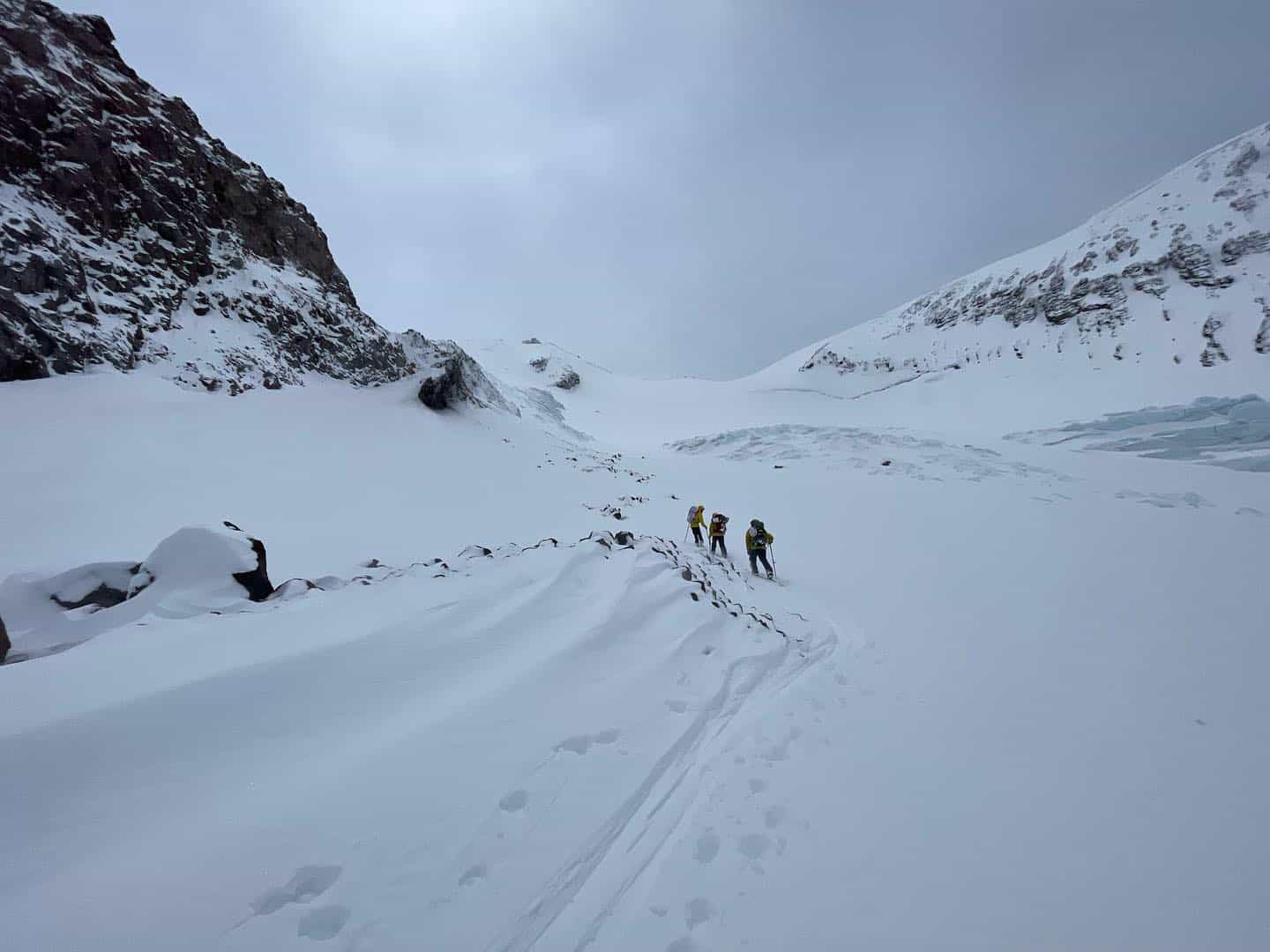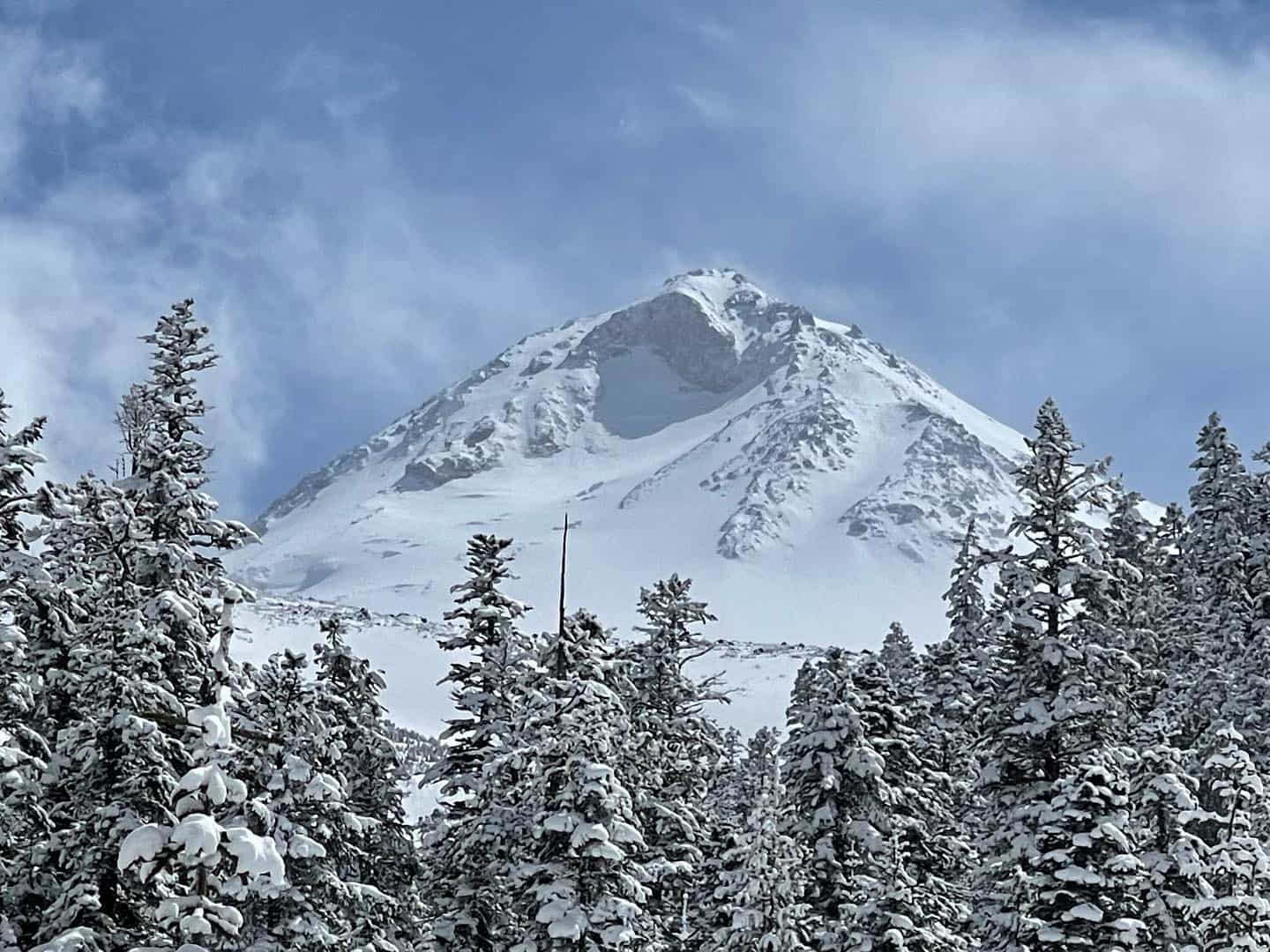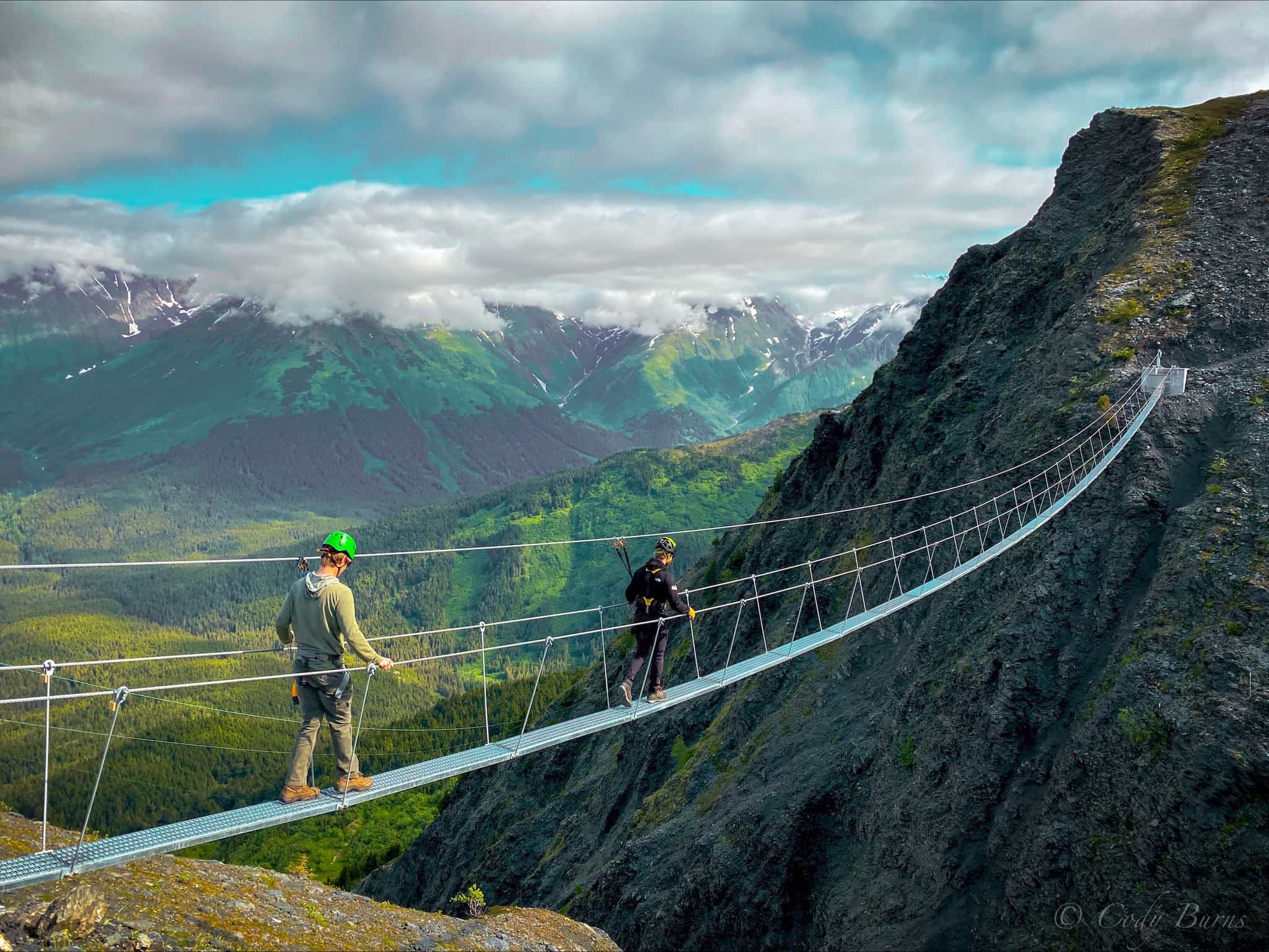
Rescue crews were involved in a “12-hour mega rescue” for a lost climber who endured an open bivy at 11,600 feet on Whitney Glacier, Mount Shasta, yesterday.
This is one of the most difficult and dangerous areas of the mountain to access, especially with the weather over the weekend.
- Related: 2h30m – Jack Kuenzle Sets ‘Fastest Known Time’ For Ski Ascent/Descent of 14,162′ Mount Shasta, CA

Extremely poor visibility kept aerial resources grounded meaning USFS Climbing Rangers, in cooperation with Siskiyou County SAR, had to locate the climber by foot. Thankfully, he was alive and in remarkably good shape. Crews were able to assist him down the mountain to safety.
Crews were thankful for a safe day and a positive outcome. However, this incident is a result of things they preach so often to climbers:
- Check the weather before you climb, and don’t climb into a whiteout
- Don’t summit late in the day
- Don’t separate from your group
- Carry navigation tools and know how to use them
- Play the “what if” game and have a plan for when things don’t go as expected. A small bivy sack is a great thing to always have in your pack.

Despite being 15 minutes off the interstate, a rescue on Mount Shasta is neither automatic nor instant. Even rescues that seem straightforward involve planning, effort, and risk. Keep it PRO out there, people!
According to Wikipedia, Mount Shasta is a potentially active volcano at the southern end of the Cascade Range in Siskiyou County, California. At an elevation of 14,179 feet (4321.8 meters), it is the second-highest peak in the Cascades and the fifth-highest in the state. Shasta has an estimated volume of 85 cubic miles (350 cubic kilometers), which makes it the most voluminous stratovolcano in the Cascade Volcanic Arc. The mountain and surrounding area are part of the Shasta–Trinity National Forest.







